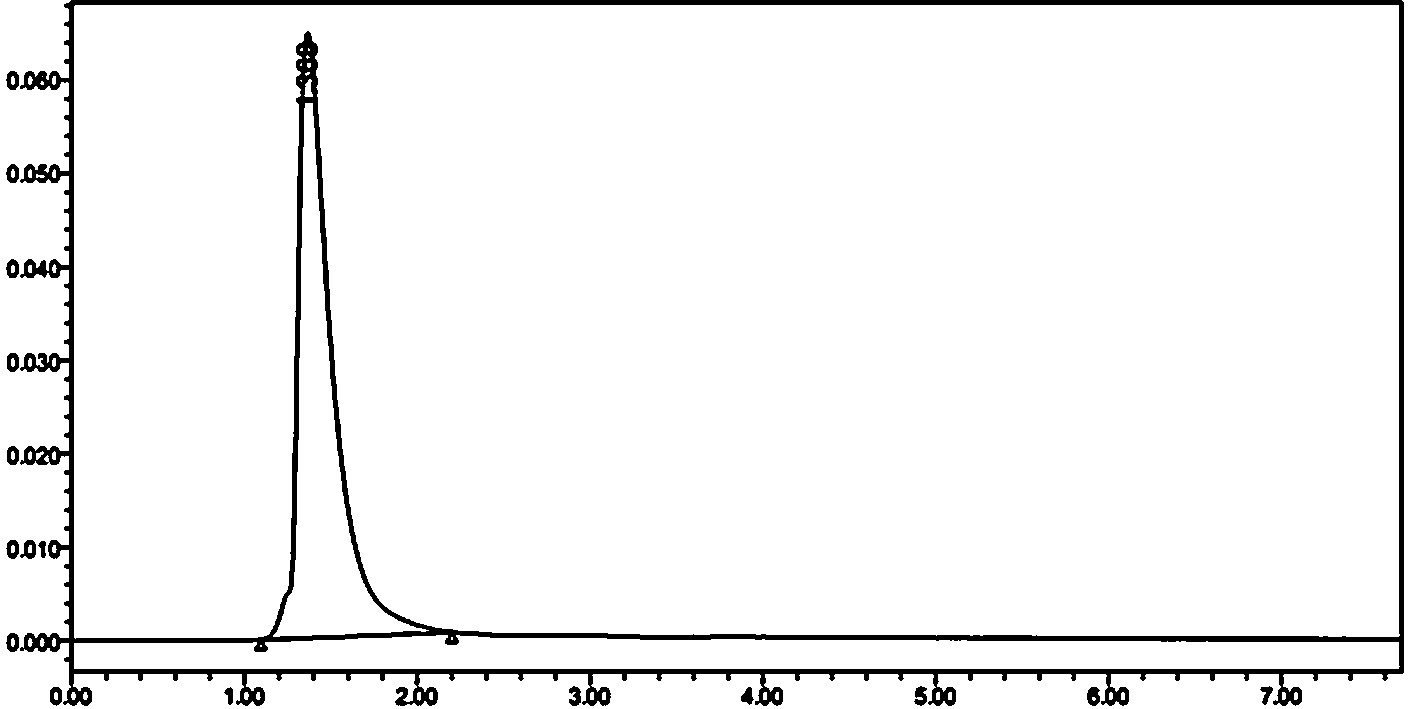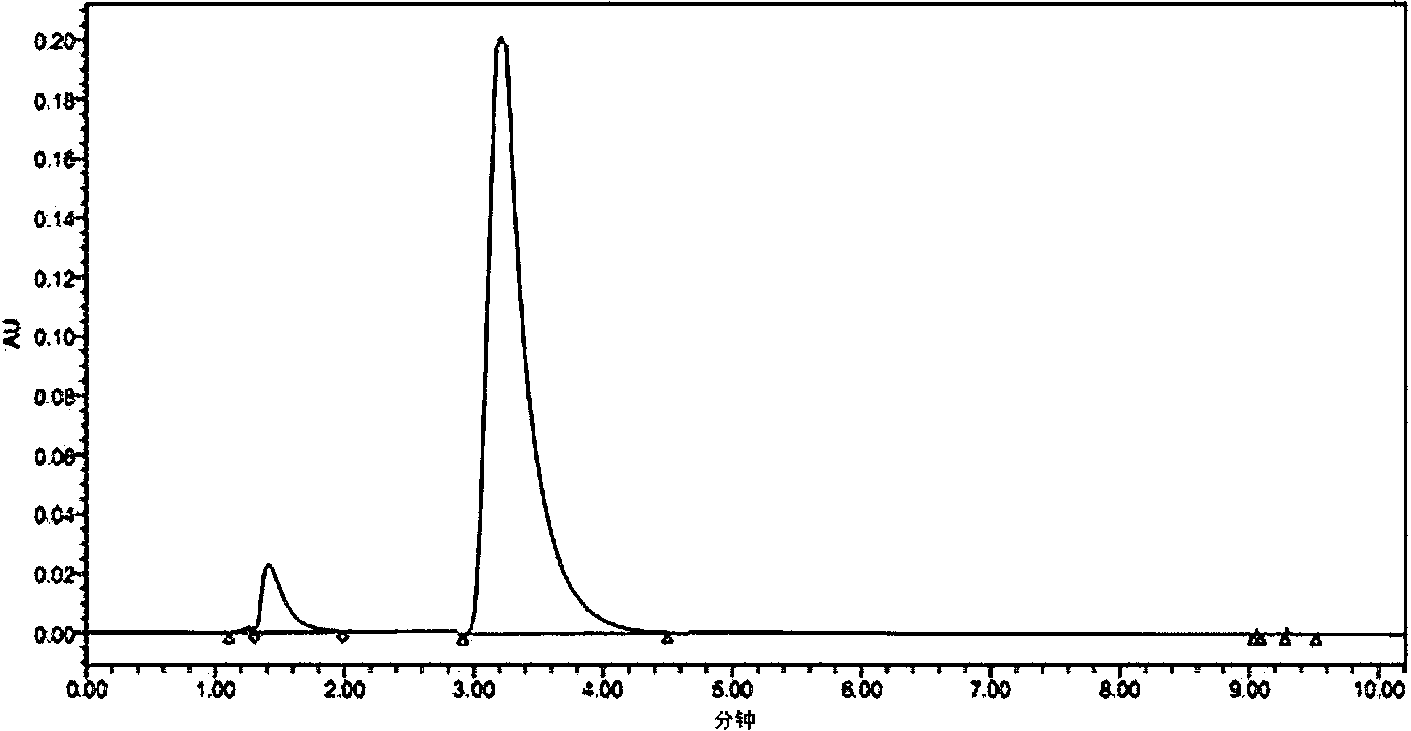Preparation method of zirconium group hydrophile chromatographic column and application thereof in measuring melamine content in raw milk or dairy product
A hydrophilic chromatographic column and melamine technology, which is applied in the field of chromatographic detection, can solve the problems affecting the sensitivity and accuracy of detection results, cumbersome sample pretreatment operations, and large amount of organic reagents, saving processing time, reducing noise, and standard deviation. small effect
- Summary
- Abstract
- Description
- Claims
- Application Information
AI Technical Summary
Problems solved by technology
Method used
Image
Examples
Embodiment 1
[0039] The preparation of embodiment 1 zirconium-based chromatographic column and the separation of melamine
[0040] Put carefully screened silica gel microspheres with a particle diameter of 3.5 μm (s=0.30) in 6 mol / L hydrochloric acid solution for 0.5 h of sonication for activation pretreatment, suction filtration, washing, and drying. Put the activated and pretreated silica gel microspheres into a 0.1mol / L zirconium solution and magnetically stir for 1.5h for self-assembly to obtain a composite SiO with a layer of zirconia nanoparticles assembled on the surface of the silica spheres. 2 -ZrO 2, suction filtration, washing, and drying; repeat the above operation four times. After burning at 500℃, the core-shell type ZrO can be prepared 2 / SiO 2 microspheres, the ZrO 2 / SiO 2 Zr / Si HILIC was obtained after further flotation of microspheres. Characterized by analysis: Zr / Si HILIC particle size 3.7μm (s=0.31), cylindrical mesopore structure, specific surface area 168.1m ...
Embodiment 2
[0043] Embodiment 2 blank experiment
[0044] Add 8 mL of 1% trichloroacetic acid solution and 2 mL of acetonitrile to a 50 mL plastic centrifuge tube with a stopper, ultrasonically extract for 10 min, shake for 10 min, centrifuge at a speed greater than 4500 r / min for 10 min, take 1 mL of the supernatant and filter it with 0.2 μm Membrane filtration. Perform HPLC determination at room temperature, and quantify with the standard curve method. As a result, no melamine was detected.
[0045] The blank experiment shows that the sample processing process has no interference to the determination of melamine.
Embodiment 3
[0046] The determination of embodiment 3 negative sample and limit of detection
[0047] Accurately weigh 1g (accurate to 0.0001g) negative milk powder sample in a 50mL plastic centrifuge tube with a stopper, add 8mL of 1% trichloroacetic acid solution and 2mL of acetonitrile to the centrifuge tube, ultrasonically extract for 10min, and shake for 10min to obtain a concentration greater than Centrifuge at a speed of 4500r / min for 10min, filter the supernatant through a 0.2μm filter membrane, and perform HPLC determination at room temperature. Quantitatively using the standard curve method, the results did not detect melamine (see figure 2 ).
[0048] Accurately add 0.0100g melamine standard sample to 100g milk powder negative sample, and mix well. Accurately weigh 1g of the sample (accurate to 0.0001g) into a 50mL plastic centrifuge tube with a stopper, use the above method to extract, use the extracted solution as the mother liquor, and measure it by dilution step by step. ...
PUM
| Property | Measurement | Unit |
|---|---|---|
| particle diameter | aaaaa | aaaaa |
| specific surface area | aaaaa | aaaaa |
| pore size | aaaaa | aaaaa |
Abstract
Description
Claims
Application Information
 Login to View More
Login to View More - R&D
- Intellectual Property
- Life Sciences
- Materials
- Tech Scout
- Unparalleled Data Quality
- Higher Quality Content
- 60% Fewer Hallucinations
Browse by: Latest US Patents, China's latest patents, Technical Efficacy Thesaurus, Application Domain, Technology Topic, Popular Technical Reports.
© 2025 PatSnap. All rights reserved.Legal|Privacy policy|Modern Slavery Act Transparency Statement|Sitemap|About US| Contact US: help@patsnap.com



